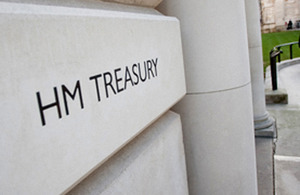Chancellor announces 8,000 more West Midlands jobs could be created by high speed rail line
30,000 jobs could be created if the construction of a new high speed rail line from London to Birmingham goes ahead, Chancellor said today.

30,000 jobs could be created if the construction of a new high speed rail line from London to Birmingham goes ahead, Chancellor of the Exchequer, George Osborne, said today. More than 8,000 of these jobs are forecast for the West Midlands, with 4,500 of those at the planned new station site in Birmingham, which the Chancellor visited today.
Early findings from research by High Speed Two Ltd show that new job opportunities would be created by regeneration and construction of new stations along the line of the proposed route. This would be in addition to the 10,000 jobs which are expected to be created directly from the construction of the line itself.
Visiting the site of the planned new Curzon Street station in Birmingham, the Chancellor said:
These new jobs would provide work opportunities to thousands of people in Birmingham and the rest of the West Midlands. Returning the UK to sustainable economic growth is the Government’s overriding priority. By working closely with business and investing in infrastructure projects such as High Speed 2 we can provide the certainty and stability that businesses need to grow and invest in the UK.
Notes for editors
-
The forecast of 30,000 jobs was made by HS2 Ltd (the body developing High Speed Rail proposals) as part of their assessment of potential regeneration of employment. This will be published in February 2011.
-
It has already been announced that 10,000 jobs would be created directly from the construction of the high speed line itself.
-
The Government’s proposed high speed rail network between London and the West Midlands would:
- reduce journey times from London to Birmingham to 49 minutes;
- reduce total journey time from London to Manchester and Leeds to around 80 minutes;
- enable links onto existing main lines to be built, enabling through-running high speed services to reach other destinations including Liverpool, Newcastle and Preston, and could reduce the journey time from Glasgow and Edinburgh to London to just 3 hours 30 minutes - fast enough to see a significant number of travellers transfer to rail from aviation; and
- allow the capacity released through transferring long-distance services to the new network to be used to expand commuter, regional and freight services on the West Coast, East Coast and Midlands main lines.
-
A public consultation on the potential route of the high speed line will be launched in February 2011.
Non-media enquiries should be addressed to the Treasury Correspondence and Enquiry Unit on 020 7270 4558 or by e-mail to public.enquiries@hm-treasury.gov.uk
Media enquiries should be addressed to the Treasury Press Office on 020 7270 5238.